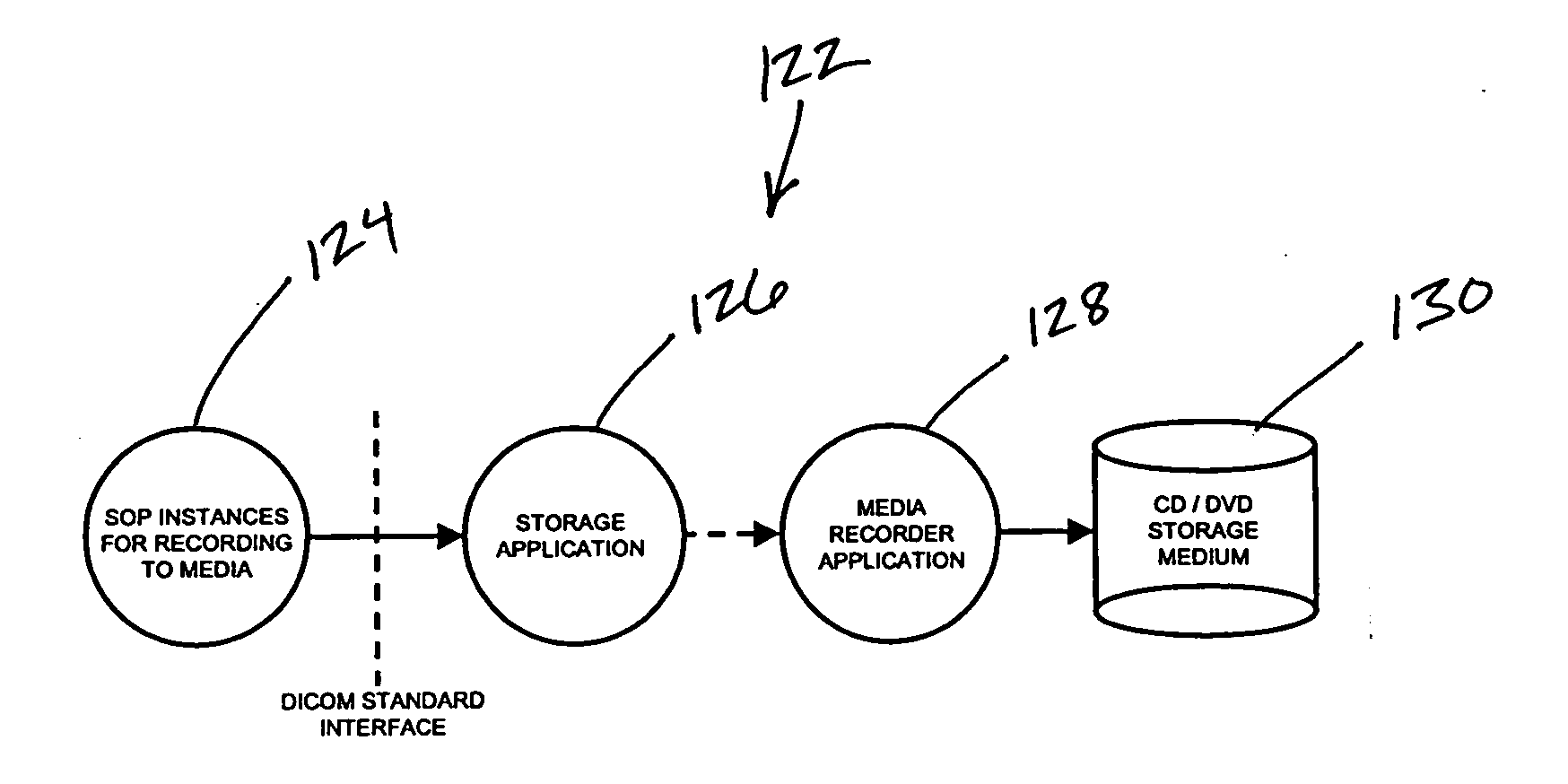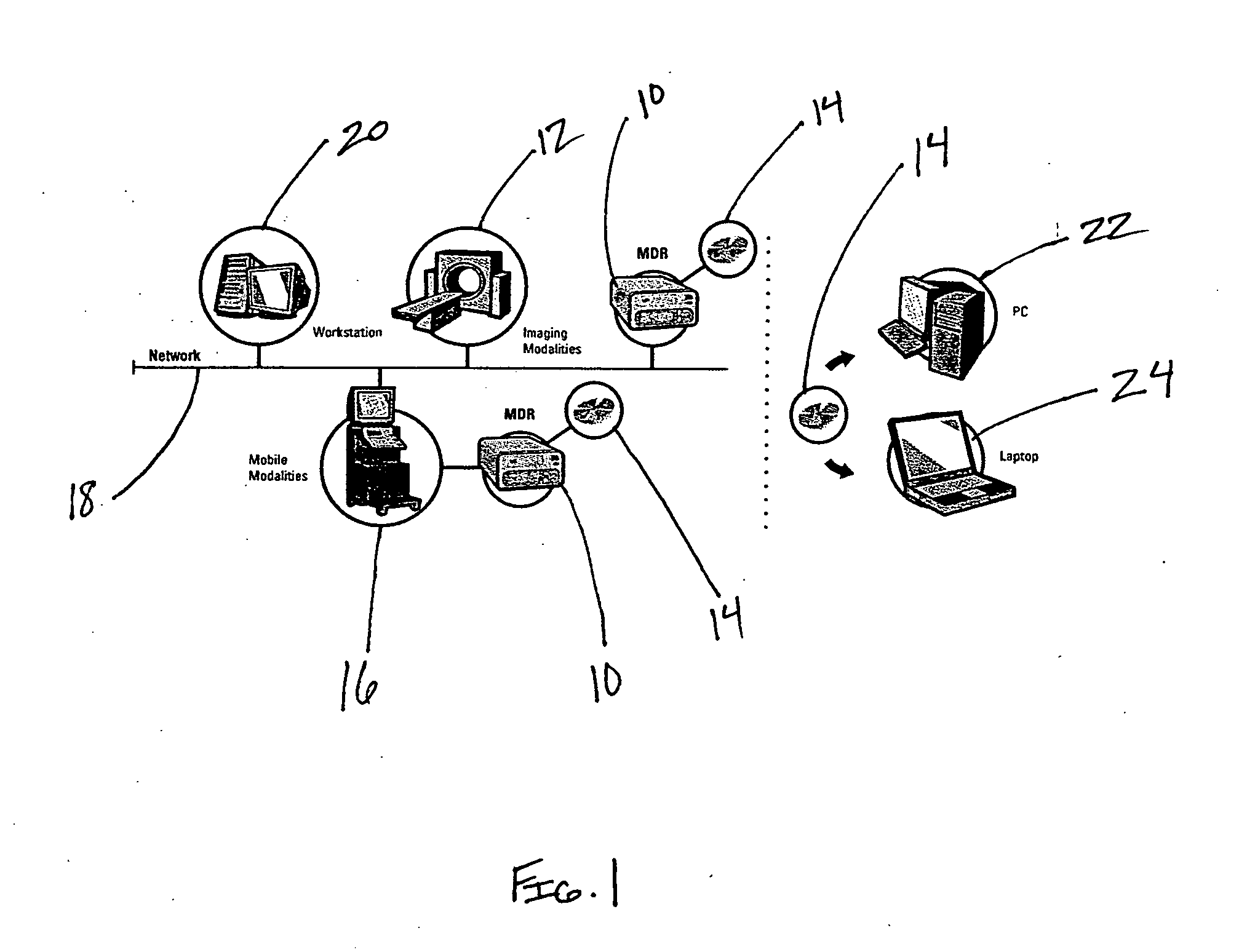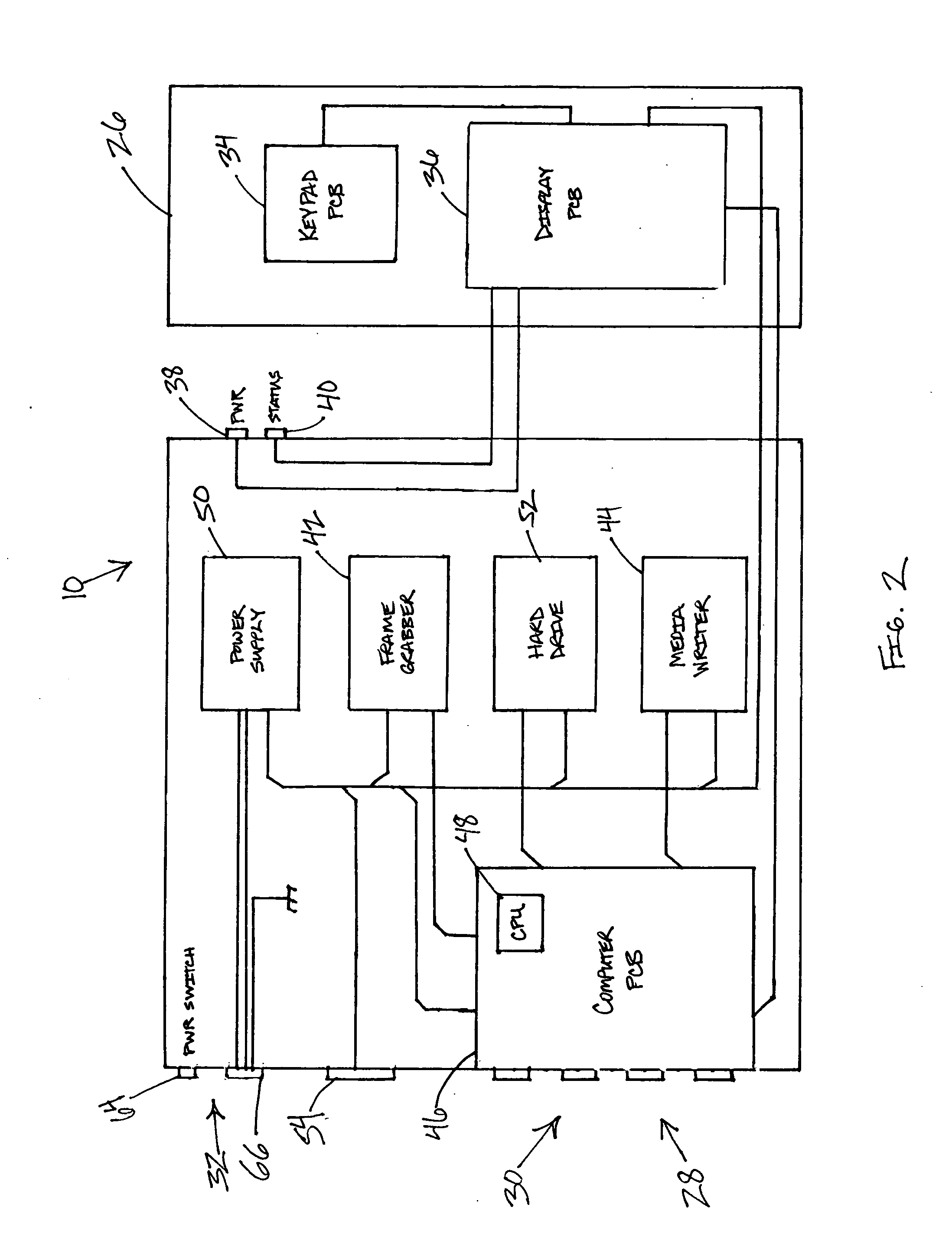System and method for recording medical image data on digital recording media
a digital recording media and image data technology, applied in the field of system and method for recording medical video image data on portable digital recording media, can solve the problems of large film material and storage space, large storage space and management, and the inability to print complete sets of medical images from these imaging devices, so as to achieve a much faster and economic production speed, reduce storage capacity, and increase the effect of storage capacity
- Summary
- Abstract
- Description
- Claims
- Application Information
AI Technical Summary
Benefits of technology
Problems solved by technology
Method used
Image
Examples
Embodiment Construction
[0028] In medical imaging, Picture Archiving and Communication Systems (PACS) are computers or networks dedicated to the storage, retrieval, distribution and presentation of medical images. Full PACS handle images from various modalities, such as fluoroscopy, ultrasonography, radiography, magnetic resonance imaging (MRI), positron emission tomography (PET), computed tomography (CT) and so on. PACS replaces hard-copy based means of managing medical images, such as film archives. It expands on the possibilities of such conventional systems by providing capabilities of off-site viewing and reporting. Typically a PACS network consists of a central server which stores a database containing the images. This server is connected to one or more clients via a LAN or a WAN, which provide and / or utilize the images. Client workstations can use local peripherals for scanning image films into the system, printing image films from the system and interactive display of digital images. Modem radiolog...
PUM
 Login to View More
Login to View More Abstract
Description
Claims
Application Information
 Login to View More
Login to View More - R&D
- Intellectual Property
- Life Sciences
- Materials
- Tech Scout
- Unparalleled Data Quality
- Higher Quality Content
- 60% Fewer Hallucinations
Browse by: Latest US Patents, China's latest patents, Technical Efficacy Thesaurus, Application Domain, Technology Topic, Popular Technical Reports.
© 2025 PatSnap. All rights reserved.Legal|Privacy policy|Modern Slavery Act Transparency Statement|Sitemap|About US| Contact US: help@patsnap.com



